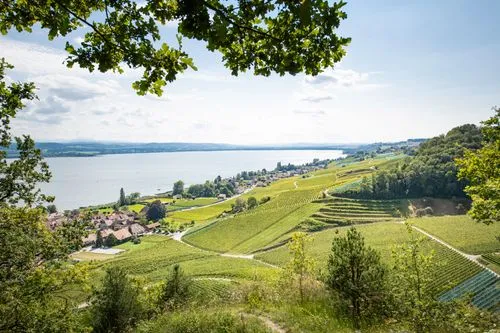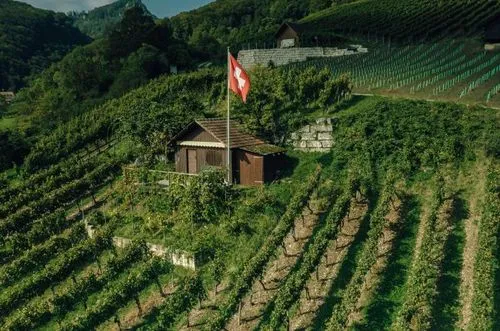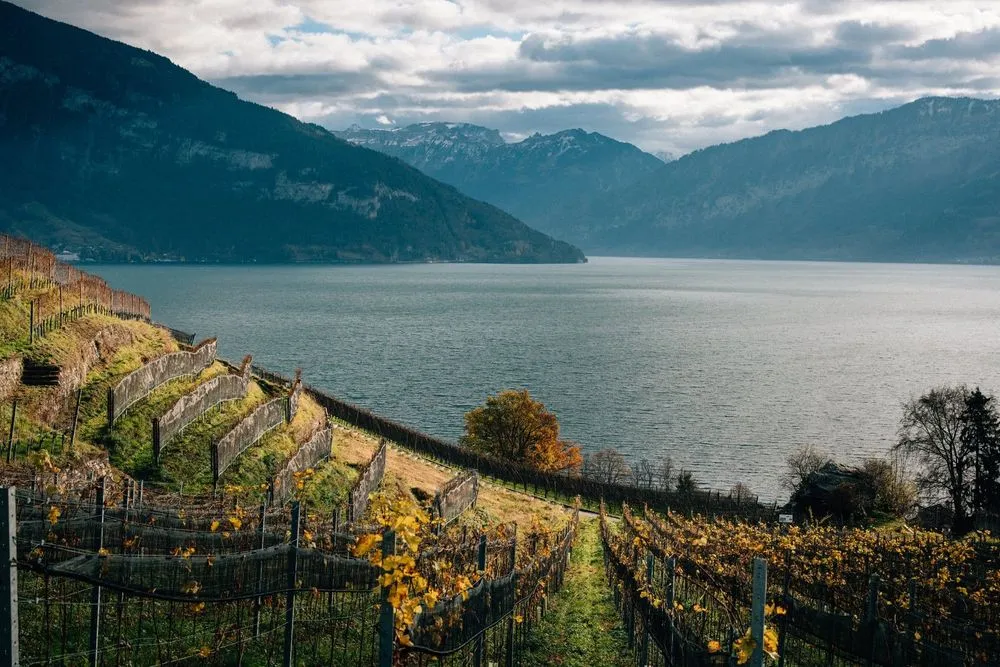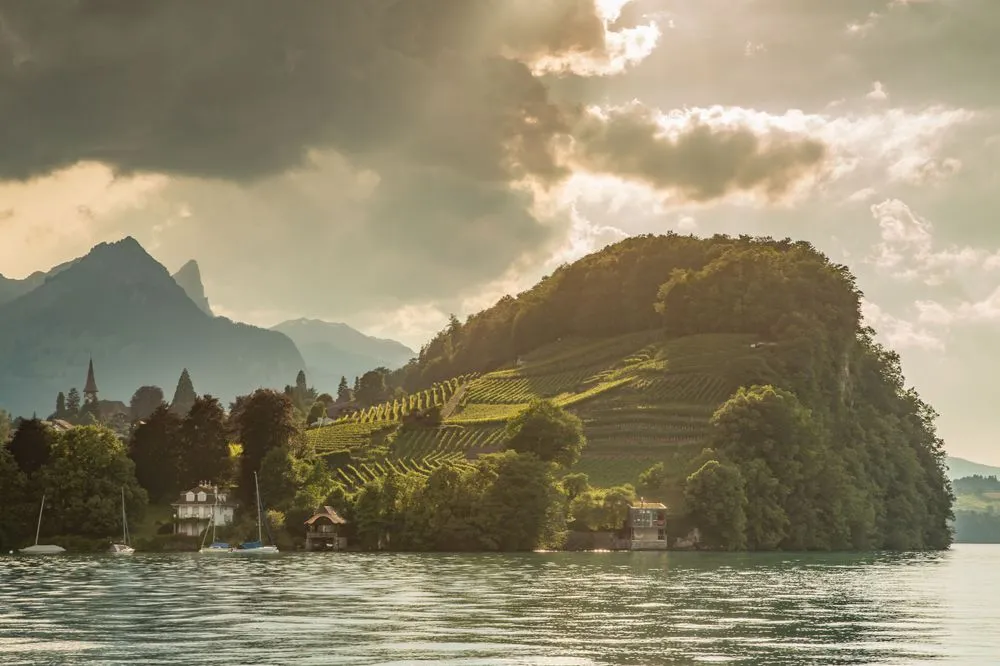In terms of viticulture, the Lake Thun region and the rest of the canton of Bern belong to German-speaking Switzerland, while the Lake Biel wine-growing region belongs to the Three Lakes Region.
Vines grow on the Lake Thun on steep slopes with gradients of up to 75% and at altitudes of up to 650 metres above sea level. The exposed location gives the grapes plenty of sun, strong aromas and a fresh acidity – a hallmark of the region that is proving to be a valuable advantage in the face of climate change.
The approximately 32 hectares of vineyards are spread over around 20 hectares around Lake Thun and 10 hectares in other areas of the canton of Bern. Here, expressive wines with character are produced on mineral glacial soils and in a Mediterranean-Alpine climate. During the day, warm air masses and cool fall winds at night ensure a unique interplay of aromas in the grapes.
Diversity through pioneering spirit
Müller-Thurgau and Pinot Noir dominate the scene, complemented by specialities and robust new varieties such as Sauvignac, Regent and Solaris. The latter in particular are gaining in importance: half of the vineyard area is already planted with fungus-resistant varieties, and the trend is rising. The region is thus sending a strong signal for sustainable viticulture.
Wine with history – and a future
The Lake Thun wine region looks back on an eventful past. After a decline in the 20th century, it is now on the rise again. Passionate winemakers are reviving this cultural asset.






